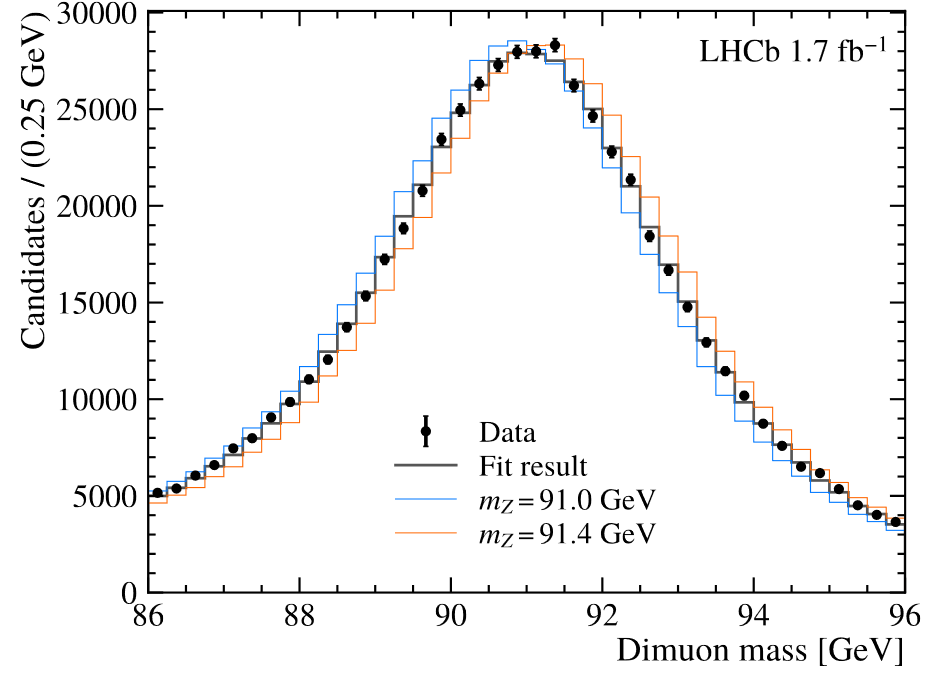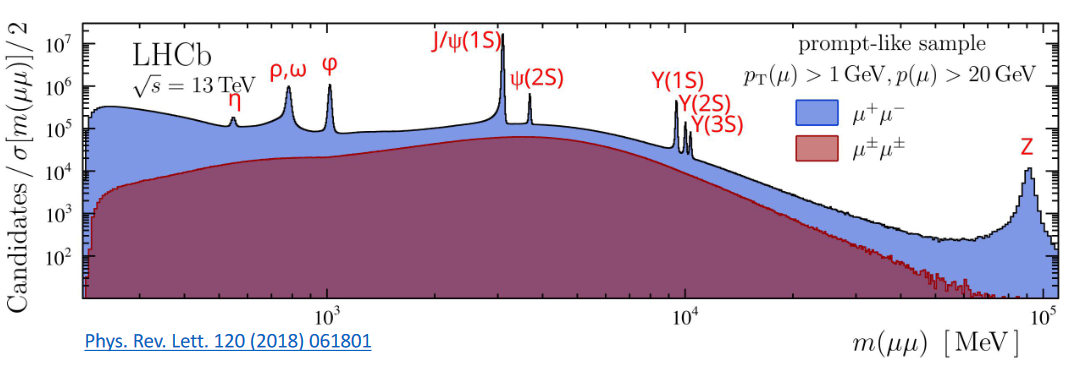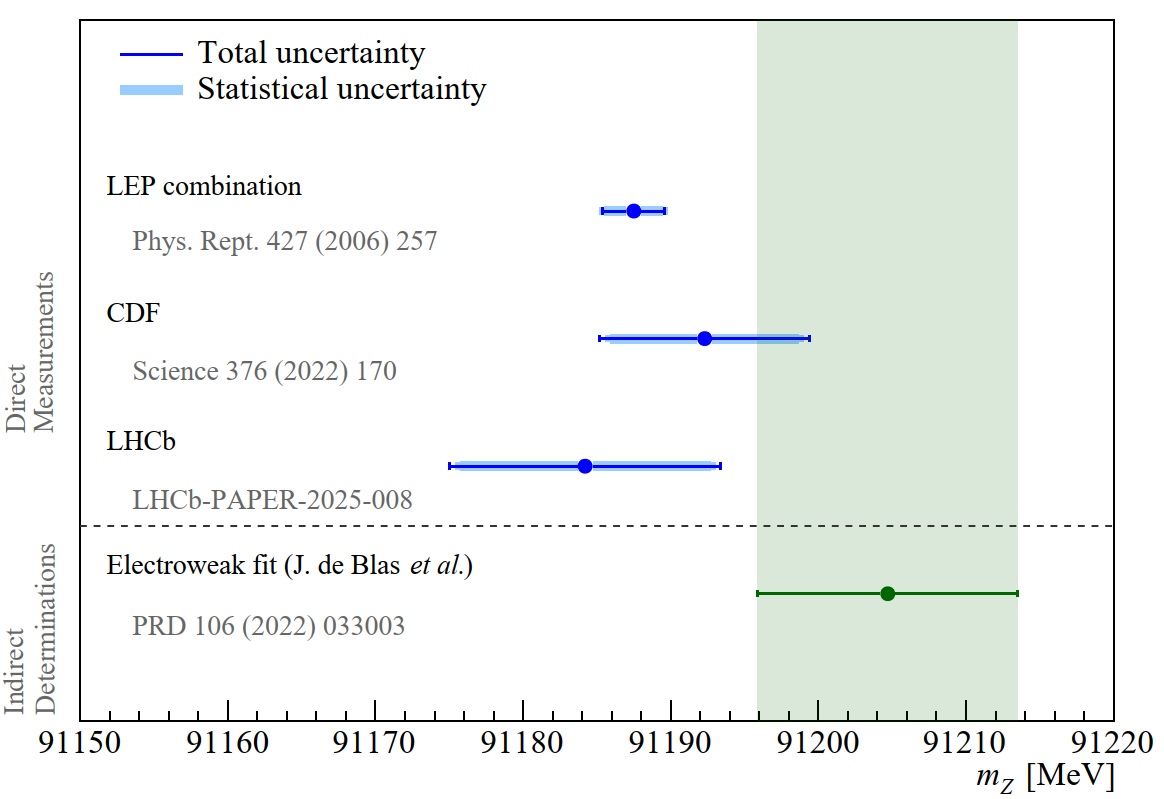Today, the LHCb collaboration submitted for publication a paper reporting the first dedicated Z-boson mass measurement at the LHC using Z→μ+μ− decays. The data were recorded in 2016 and correspond to an integrated luminosity of 1.7 fb−1. Around 174×103 Z-boson events were selected. The image below shows the invariant mass of two muons from the Z-boson decay compared with the results of the fit and with the expectations for two different Z-boson mass values.

The dimuon mass spectrum indicating the location of the Z-boson peak is shown in the image below, together with different mesons (quark-antiquark bound states) which are located at lower mass values. A sample of about 193×103 Υ→μ+μ− decays was used for calibration, while approximately 48×103 J/ψ→μ+μ−decays were used for an independent cross-check. The resulting measurement of the Z-boson mass is mZ = 91184.2 ± 8.5 ± 3.8 MeV.

The LHCb result is compared with other results in the plot below. The most precise measurement of the Z-boson mass was obtained by combining data from the four LEP e+e− collider experiments, yielding mZ = 91187.6 ± 2.1 MeV. The CDF collaboration at the Tevatron pp collider also reported a measurement of mZ with a precision of 7 MeV, performed as a validation of their W-boson mass determination.

The LHCb result is consistent with previous measurements. The value obtained in the Standard Model fit, which included all the electroweak measurements except the direct measurements of the Z-boson mass, is also shown in the lower part of the plot. The LHCb measurement is consistent with and matches the precision of this Standard Model prediction.
The strategies for measuring the Z-boson mass at electron-positron and hadron colliders differ. Clean electron-positron collisions allowed LEP experiments to count the number of Z-bosons produced at different collision energies, enabling the Z-boson line shape to be obtained and the Z-boson mass to be determined. At hadron colliders, however, the production mechanism of the Z-boson is less well-defined, so its mass is measured by studying the invariant mass of its decay products. Achieving this requires a high level of precision in understanding the detector response, making the measurement particularly challenging. Nevertheless, the first such measurement in proton-proton collisions shows that this type of analysis can be conducted at the LHC.
For more information, see the LHCb publication. Preliminary results of this measurement were already presented at a CERN seminar on 18 march 2025, as well as at the Moriond EW and QCD conferences.
